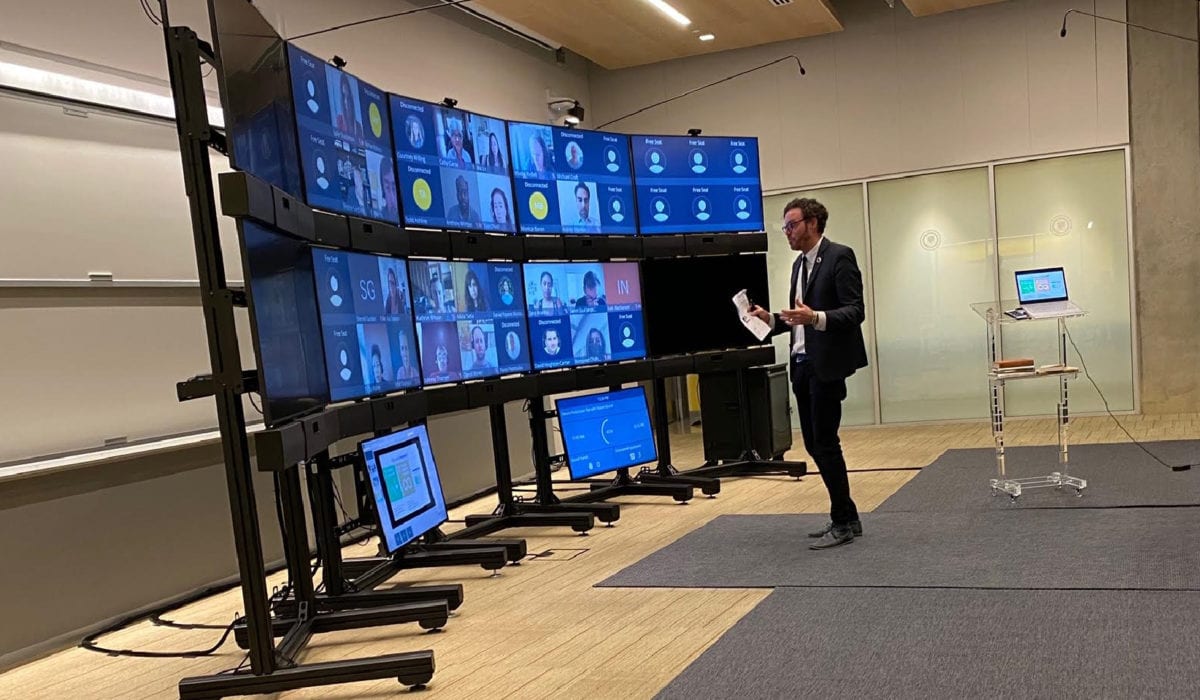Haas establishes itself as leader in distance learning

COVID-19 may have forced schools to move online, but the idea of teaching business remotely wasn’t new to Berkeley Haas. For years, senior leaders have been debating the merits of online instruction and have been exploring options. The pandemic, while unexpected, simply kicked those plans into high gear.
“It turns out we could switch to remote teaching really fast,” says Dean Ann Harrison. “Having realized we can do this, we have no choice but to do this.” And the focus, says Harrison, will be on optimizing the educational experience.
Before administrators even planned for the possibility of fall instruction combining in-person and remote learning, Haas purchased two state-of-the-art virtual classrooms, each “seating” 84 students—to be ready for MBA core courses this fall.
The fast launch is thanks to Berkeley Executive Education, which was already working to customize two classrooms pre-pandemic (albeit on a more accelerated pace now). Haas piggybacked on their order.
Located in Chou Hall and in the computer lab, the technology replitcates a classroom’s physical space, with faculty teaching to a curved wall of student screens. Multiple cameras allow teachers to make eye contact with individual students; heat mapping shows where faculty have directed their attention to avoid favoring certain screens.
And, says Prof. Jennifer Chatman, PhD 88, associate dean of learning strategies, it means they don’t have to completely reimagine their courses. For students, the advantages are equally pronounced. “It provides a rich, high-touch, interactive classroom experience,” Chatman says.
Haas board member Michael Gallagher, BS 67, MBA 68, says the experience is almost like being in the room with others. Gallagher is generously funding 10% of the total $1.3 million cost of the classrooms, and he’s challenging Haas alumni and friends to join him.
“There are going to be some things that stay with us after the pandemic,” Gallagher says, “and I think virtual teaching is one of them.” He sees this as a chance to propel Haas forward as the preeminent leader in virtual education.